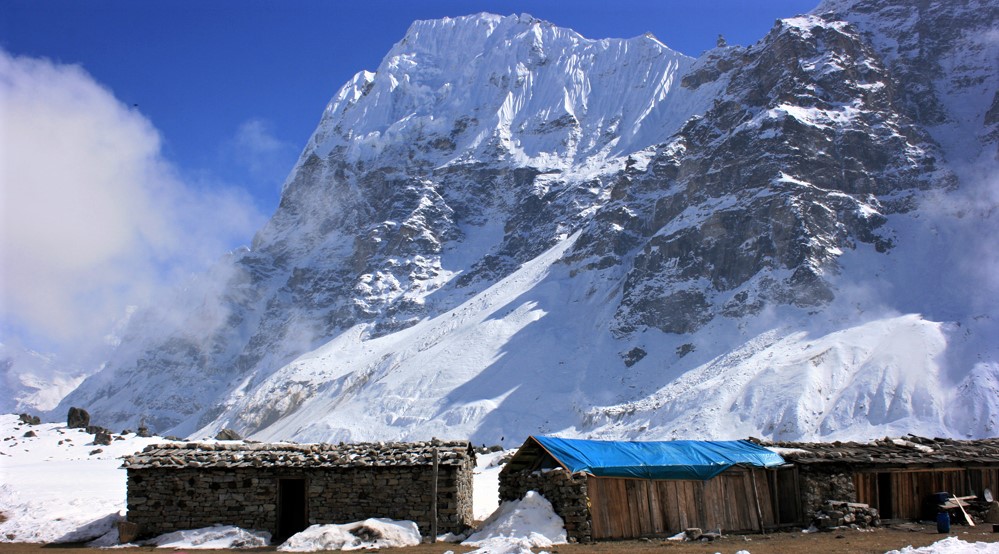All you need to know about Kambachen village | Interesting things about Kambachen
Kambachen is a remote village located in the Kanchenjunga region of Nepal. Situated at an altitude of approximately 4,000 meters (13,123 feet) above sea level, Kambachen serves as a significant stopover for trekkers and mountaineers exploring the Kanchenjunga massif. Here's everything you need to know about Kambachen:
Geographical Features:
Kambachen is situated in the Taplejung District of Nepal, in the northeastern part of the country. It is located within the Kanchenjunga Conservation Area, which spans an area of approximately 2,035 square kilometers (785 square miles). Kambachen lies at an altitude of around 4,000 meters (13,123 feet), making it a high-altitude village surrounded by towering peaks, glaciers, and deep valleys.
Trekking Route:
Kambachen is a significant point along the Kanchenjunga Base Camp Trek, a challenging and rewarding trekking route. The trek usually begins from Suketar or Taplejung and takes trekkers through stunning landscapes and remote villages. From Kambachen, trekkers continue towards Lhonak and Pangpema, which are the base camps for expeditions to Kanchenjunga and other peaks in the region.
Scenic Beauty:
Kambachen is renowned for its breathtaking natural beauty. The village offers stunning panoramic views of the surrounding snow-capped peaks, including Kanchenjunga (8,586 meters/28,169 feet), the third highest mountain in the world. The region is characterized by dramatic landscapes, with glaciers, moraines, deep valleys, and pristine alpine meadows. Trekkers are treated to mesmerizing vistas throughout their journey.
Flora and Fauna:
The Kanchenjunga Conservation Area, including Kambachen, is rich in biodiversity. The region features diverse flora, with forests of rhododendron, fir, birch, and juniper trees. Various species of colorful Himalayan flowers can be found in bloom during the spring season. The area is also home to a wide range of wildlife, including elusive snow leopards, red pandas, Himalayan black bears, musk deer, blue sheep, and numerous bird species.
Sherpa Culture:
Kambachen is located in an area inhabited predominantly by Sherpa people, who have a unique culture shaped by their close relationship with the mountains. Sherpas are renowned for their mountaineering skills and have played a crucial role in numerous Himalayan expeditions. In Kambachen, visitors can experience the warm hospitality of the Sherpa community, learn about their traditions, and observe their religious practices.
Accommodation and Facilities:
Kambachen is a remote village, and the accommodation options are basic. Trekkers can find simple lodges and teahouses offering basic facilities such as beds, blankets, and communal dining areas. However, it's important to note that amenities may be limited, and it is advisable to carry essential supplies and equipment. The teahouses provide meals, typically including Nepali and Tibetan cuisine, to replenish energy during the trek.
Mountaineering Base Camp:
Kambachen is often used as a base camp for mountaineering expeditions to peaks in the Kanchenjunga massif. Climbers usually establish higher camps beyond Kambachen for acclimatization and further ascent. Expeditions in this region require advanced mountaineering skills, technical equipment, and experienced support staff. Kambachen serves as a strategic location for climbers to prepare for their summit attempts.
Challenges and Precautions:
Trekking and mountaineering in the Kambachen area present several challenges. The high altitude, rugged terrain, and remote location demand physical fitness, proper acclimatization, and careful planning. Trekkers and climbers should be prepared for changing weather conditions, steep ascents and descents, and potential altitude-related issues. It is advisable to hire experienced guides, undergo thorough medical check-ups, and carry appropriate gear and provisions.




.jpg)



